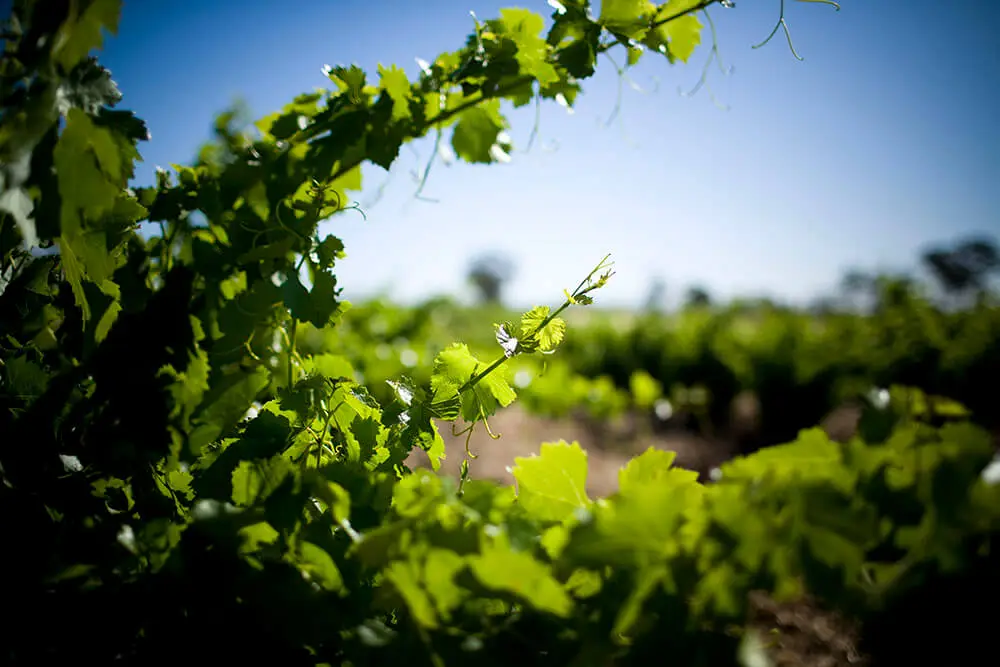
At Charles Melton Wines, great emphasis is placed on the quality of fruit. All grapes are dry grown and harvested from the winery’s own 50 acres of prime Barossa vineyard land, as well as from a select group of grapegrowers.
Yields are extremely low with often only one tonne to the acre, and the vineyards are truly old with many exceeding 80 years.
A range of techniques are employed during the winemaking process. These include: whole bunch fermentation, open fermentation, pigeage and indigenous yeast fermentation. These techniques allow a range of blending options to give the most complete wine, in terms of balance, between pure fruit flavours and more earthy/gamey characters.
Varieties grown
Locations
Acres Planted
THE KIRCHE VINEYARD, KRONDORF
Relatively youthful at 40 years old, this vineyard produces some of the highest quality Cabernet grown in the Barossa, along with superb Shiraz. Most of the vineyard sits on loam and red clay, with the edge on the eastern side heading into the seam of black cracking clay (Bay of Biscay). So named because it surrounds the Zum Kripplen Christi Lutheran Church (“Kirche” in German), built in 1864. 30 acres planted.
- Altitude
- 290m
- Rainfall
- 450mm
- Region
- Krondorf
- Variety
- Cabernet & Shiraz
- Year planted
- 1989 & 1974
- Planted Land
- 30 acres planted
- Soil
- Hard sandy loam over red clay
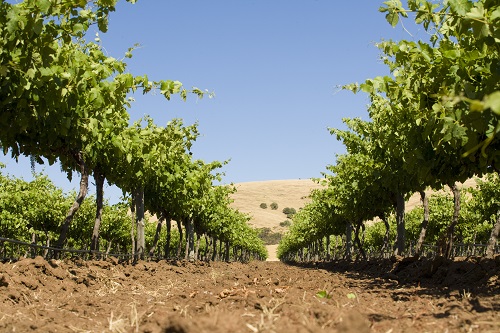
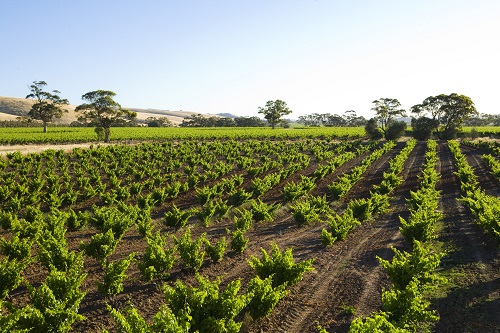
THE WINERY BLOCK, KRONDORF
Gnarled old bush vine Grenache planted in 1942 during the WWII, growing in a strip of Bay of Biscay black cracking clay that runs from Bethany Village through to the end in Krondorf Village. A little patch of Shiraz completes this dry grown block of outstanding quality and provides a historical and beautiful outlook for our Cellar Door visitors. Five acres planted.
- Altitude
- 285m
- Rainfall
- 450mm
- Region
- Krondorf
- Variety
- Cabernet & Shiraz
- Year planted
- 1943, 1997 & 2005
- Planted Land
- 5 acres planted
- Soil
- Sandy sandy loam over red clay
WOODLAND VINEYARD, ALTONA
A superb 25 acre, dry grown vineyard of almost 50 years age, growing Shiraz and Grenache principally, with a small Cabernet plot. These different soil types comprise the earth here, dark loam, shallow red load over limestone and a small patch of gravel soil in which the Cabernet has its roots.
- Altitude
- 200m
- Rainfall
- 460mm
- Region
- Altona
- Variety
- Shiraz, Cabernet & Grenache
- Year planted
- 1960
- Planted Land
- 25 acres planted
- Soil
- Red brown loam over limestone
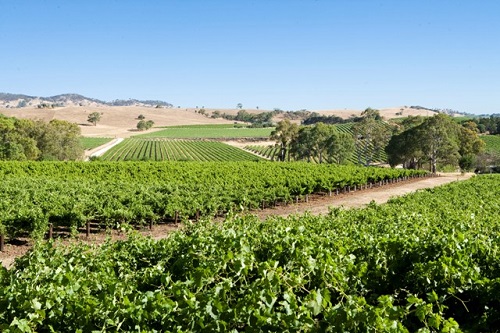
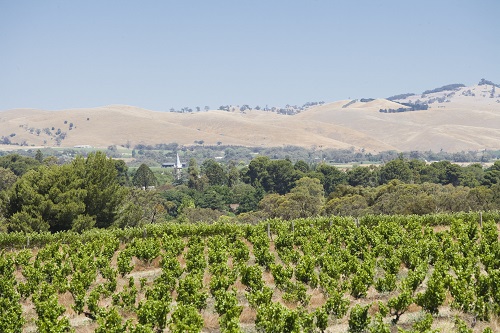
KOCH VINEYARD, ROWLAND FLAT
The vines on our block were planted in 1927 by Bernhard Adolph Koch, the great grandson of Friedrich Wilhelm Koch. The vineyards were planted by some of the unemployed Afghan cameleers and was the talk of the district for the unerring accuracy of the spacings and precision of the vine rows, still evident today. Split almost equally between bushvine Grenache and Shiraz, growing in friable gradational clay loam. 20 acres planted.
- Altitude
- 240m
- Rainfall
- 460mm
- Region
- Rowland Flat
- Variety
- Grenache, Shiraz & Cabernet
- Year planted
- 1927 & 1993
- Planted Land
- 20 acres planted
- Soil
- Friable gradational clay loam
HIGH EDEN, EDEN VALLEY
Charlie and Virginia purchased 73 acres of beautifully sloping land in the high Eden Valley in 2008.
We are excited about this high elevation, cool climate site, which will be planted up with a selection of Mediterranean varieties.
- Altitude
- 550m
- Rainfall
- 620mm
- Region
- Eden Valley
- Variety
- .
- Year planted
- .
- Planted Land
- .
- Soil
- Shallow loam over ironstone
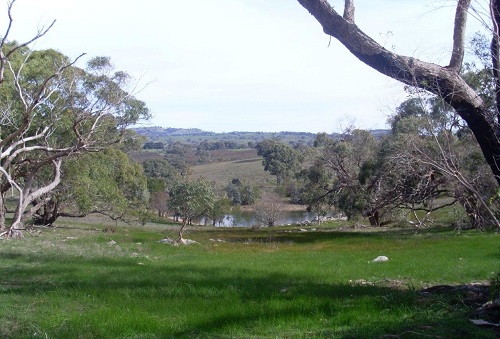
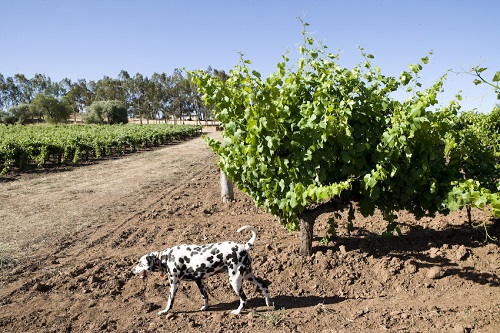
FATHER IN LAW VINEYARD, CLARE
The Father in Law vineyard was planted by Sydney Dean Weckert in 2000, using cuttings from our most prized heritage Shiraz and Cabernet blocks. A mix of old vine clones, it produces grapes with a distinctive Clare Valley mint & eucalypt characters along with weight and superb structure the region is known for.
- Altitude
- 435m
- Rainfall
- 620mm
- Region
- Clare Valley
- Variety
- Shiraz & Cabernet
- Year planted
- 2000
- Planted Land
- 5 acres planted
- Soil
- Sandy loam over red clay
HELP PROTECT OUR VINES
Phylloxera is the number one threat to viticulture in South Australia. It is known to be present in some wine regions in Victoria and New South Wales. If phylloxera were illegally or accidentally brought into this state, any grapevines not planted on ‘phylloxera resistant rootstocks”, the majority of our vineyards, include all the old vines, would be at risk of death.
Phylloxera is a small, yellow insect that resembles a rose aphid (but much smaller). It lives underground, feeding on the roots of the vines until it destroys them, eventually causing the vines to decline and die. It has no impact on the flavour or quality of the grapes of wine.
By far the biggest risk for spreading phylloxera is humans. Phylloxera can be carried in soil, grapes, leaves or anything the picks up any of these. People can carry the insect on their footwear, clothing or vehicles.
Phylloxera can be present in a vineyard for several years before any symptoms are seen. This is why it is very important not to walk or drive in any vineyards without permission – especially if you have previously been in or near another vineyard interstate. You could accidentally pick up a phylloxera insect from one vineyard and transfer it to another one.
Don’t walk or drive in vineyards without permission
Don’t bring any grapevine (or other plant) material or soil into SA
For more information, you can contact Vine Health Australia on (08) 8273 0550 or admin@vinehealth.com.au or visiting their website http://www.vinehealth.com.au


